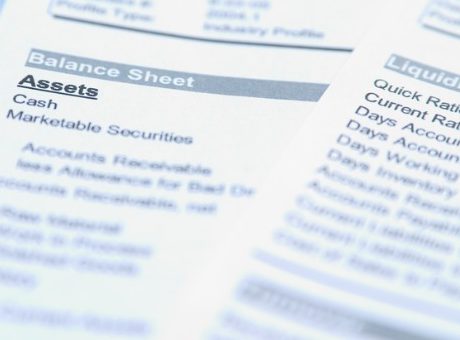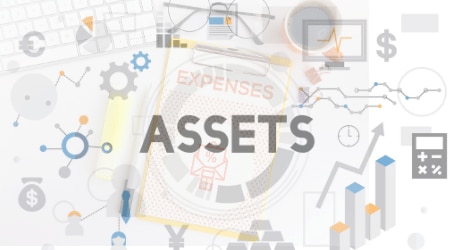In this article, you will learn:

Current Assets Meaning And Example
What Are Current Assets?
Assets that get easily converted into cash or are used during the normal operating cycle of a business or within one year (whichever is greater) are considered current assets. In this case, the operating cycle represents the time it takes to buy or produce inventory, sell the finished products, and collect cash for the products sold.
Although the operating cycle of a business is usually one year, certain companies use operating cycles that last longer than one year. For instance, liquor companies treat their inventories as current assets, although their inventories remain a part of the ageing process for more than two years.
1. Cash
Cash is the most liquid asset of an entity and is therefore important for the short-term solvency of a company. The cash balance shown under current assets is the balance available for a business. This cash can be promptly used to meet a business’s day-to-day expenses and typically includes coins, currencies, funds on deposit in the bank, Cheques, and money orders.
With the above information in mind, cash appears as the first item under the account head “current assets” in the balance sheet since it is the most liquid asset of an entity. This is because all the items in the current assets account category are listed in the order of asset liquidity.
2. Cash Equivalents
Cash equivalents are the result of cash invested by companies using very short-term, interest-earning financial instruments. These instruments are highly liquid, secure, and can be easily converted into cash, usually within 90 days. These securities include treasury bills, commercial paper, and money market funds. These securities readily trade on the market and the value of these securities can also be readily determined.
Thus, one of the key cash management strategies entails that idle cash should not be locked up into unproductive accounts. Instead, surplus cash should be put into marketable instruments.
Examples of cash and cash equivalents include:
- Bank Balances
- Bank Overdraft
- Cheques
- Drafts-On-Hand including remittances in transit
- Demand deposits with a maturity period of 3 months
- Short-term investments
3. Stock or Inventory
Inventories are the sum of items that are:
- Stocked for sale during the normal course of business (finished goods)
- In the production process and for eventual sale (work-in-progress)
- Soon-to-be consumed in the manufacturing of goods that would be sold eventually (raw material)
It is important to note that the items forming a part of inventory are the goods that would be sold during the normal course of business. Thus, goods available for resale form a part of the inventory for businesses such as merchandising companies. Goods available as raw materials, work-in-process, and finished goods, on the other hand, form a part of the inventory for businesses such as manufacturing firms.
Raw materials consist of goods that are used to manufacture products. Work-in-process refers to goods that are still in the manufacturing process and are not yet completed. Finally, finished goods refer to the items that are completed and are awaiting sale.
The cost of inventory includes all the costs that are necessary to bring goods into a place and condition in which they can be sold further. Therefore, the cost of inventory includes purchase cost, conversion costs, freight-in, and similar items that relate to the above rule. However, the following costs are excluded from the cost of inventory:
- abnormal waste of raw material, labour, and overhead,
- storage costs,
- administrative overheads and
- selling costs
Therefore, various inventory costing methods should be used once the unit cost of inventory is determined. These methods are used to bring a systematic approach to determining the cost of inventory as part of a business’s inventory management practices since each unit of inventory has a different cost.
Methods used for determining the cost of inventories are as follows:
Raw and Packing Material – First In First Out (FIFO)
Stock-in-trade (Goods purchased for resale) – Weighted Average
Stores and Spare Parts – Weighted Average
Work-in-progress and Finished Goods – Material Cost + Appropriate Share of Production Overheads and Excise Duty wherever applicable
4. Accounts Receivable
Accounts receivables are one of the important current assets of your business. Typically, you sell goods or services on credit to attract customers and augment your sales.
Likewise, extending trade credit is helpful to your customers for it gives them time to pay for goods or services they purchase on credit.
However, there is an element of risk attached to accounts receivable. That is, you are yet to receive cash against such credit sales. Therefore, it is important that you manage your accounts receivable carefully.
Now, you record the money that your customers owe to you as accounts receivable in your books of accounts.
5. Marketable Securities
Marketable securities are the investments made by a company. These investments are both easily marketable and are expected to be converted into cash within one year. These investments include treasury bills, notes, bonds, and equity securities, all of which are intangible assets.
Thus, these trading securities are recorded at cost plus brokerage fees once they are acquired. However, the value of these securities can fluctuate rapidly. This is because these securities are readily marketable.
Therefore, these trading securities need to be recorded at their fair value after the initial acquisition. The change in their value, therefore, is reflected in the income statement of a company.
Furthermore, the details with regards to such investments are mentioned in the financial footnotes.
6. Prepaid Expenses
Prepaid expenses refer to the operating costs of a business that have been paid in advance. Thus, cash reduces in the balance sheet at the time when such expenses are paid at the beginning of the accounting period. Simultaneously, a current asset of the same amount is created in the balance sheet by the name of prepaid expenses.
However, these prepaid expenses eventually turn into expenses from current assets. These expenses get converted when a business derives benefit from such an asset as per the matching principle of accounting.
Examples of prepaid expenses include prepaid rent, prepaid insurance, etc.
7. Other Liquid Assets
Other current assets include deferred assets. These assets are created when the tax payable exceeds the amount of income tax expense recognised by a business in its income statement. This can happen in situations where:
- expenses or losses are shown in the income statement before they can be deducted in your tax declaration or
- revenues or gains are taxable before they are shown in the income statement.
Thus, this deferred tax asset gets reversed over a period of time. A deferred tax is reversed when the expense is deducted for tax purposes or when revenue or gain is recognised in the income statement.
Current assets examples in a balance sheet
As a business owner, your balance sheet will display your current assets, current liabilities, fixed assets, long-term debt, capital, and other elements depending on your business.
The table below shows an example of how your current assets would look in your balance sheet.
| Particulars | December 31, 2018 (Rs in Mill) | December 31, 2017 (Rs in Mill) |
| Assets | ||
| Non- Current Assets | ||
| Property, Plant & Equipment | 24,006.20 | 26,161.80 |
| Capital Work-in-Progress | 1,052.00 | 941.60 |
| Financial Assets | ||
| 7,333.60 | 5,852.80 |
| 401.40 | 463.50 |
| Other Non-Current Assets | 718.10 | 832.30 |
| Current Assets | ||
| Inventories | 9,655.50 | 9,024.70 |
| Financial Assets | ||
| 19,251.30 | 13,935.90 |
| 1,245.90 | 889.70 |
| 15,987.70 | 14,476.90 |
| 112.90 | 97.30 |
| 178.90 | 288.00 |
| 524.90 | 427.90 |
| Current Tax Assets | 188.50 | 63.90 |
| Other Current Assets | 223.90 | 169.60 |
| 80,880.80 | 73,625.90 | |
| Equity and Liabilities | ||
| Equity | ||
| 964.20 | 964.20 |
| 35,773.20 | 33,241.70 |
| Liabilities | ||
| Non-Current Liabilities | ||
| Financial Liabilities | ||
| 351.40 | 351.40 |
| Provisions | 24,649.20 | 22,915.90 |
| Deferred Tax Liabilities (Net) | 588.20 | 1,219.60 |
| Other Non Current Liabilities | 5.10 | 6.00 |
| Current Liabilities | ||
| Financial Liabilities | ||
| ||
| 107.70 | 52.50 |
| 12,296.00 | 9,793.90 |
| 3,161.80 | 3,140.20 |
| Provisions | 1,572.60 | 874.60 |
| Other Current Liabilities | 1,411.40 | 1,065.90 |
| 80,880.80 | 73,625.90 |
Ratios Concerning Current Assets
1. Current Ratio
Current ratio evaluates a company’s ability to meet its short-term obligations typically due within a year. A current ratio lower than the industry average suggests a higher risk of default on the part of the company. Likewise, companies having too high a current ratio relative to the industry standard suggests that they are not using their assets in the best way.
Current Ratio Formula = (Current Assets/Current Liabilities)
2. Quick Ratio
Quick ratio is a more cautious approach towards understanding the short-term solvency of a company. It includes only the quick assets which are the more liquid assets of the company.
Quick Ratio Formula = (Cash and Cash Equivalents + Marketable Securities + Accounts Receivable)/(Current Liabilities)
3. Cash Ratio
Cash ratio measures a company’s total cash and cash equivalents relative to its current liabilities. This ratio indicates the ability of the company to meet its short-term debt obligations using its most liquid assets.
Cash Ratio Formula = (Cash + Cash Equivalents/Current Liabilities)
These three ratios can help you evaluate your business’s ability to cover current liabilities and expenses, as well as the ability to meet outstanding obligations.
Keep your current assets in checks
Understanding your business’s current assets allows you to better organise your information in your balance sheet and determine your company’s overall financial health.
The current assets include all the assets that can be turned into cash within a year. It is better to organise them as it helps in making better decisions that let the business grow and improve its cash flow, performance, and ability to spend money where it is most beneficial.
Using an accounting software like QuickBooks Online can help you keep track of your current assets and help you grow your business. Try 30 days for free here!












